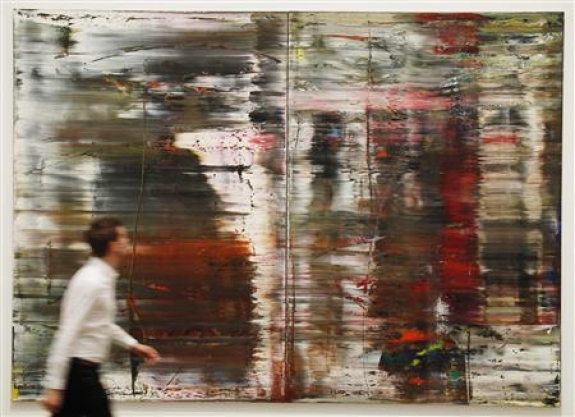Gerhard Richter is one of the world's most prized living artists, and one of his famous "Candle" series is expected to fetch 6-9 million pounds ($9-14 million) at auction in London next week.
That is the highest price expected for a single work at the upcoming series of contemporary art sales, yet the man behind the image said he found such figures bewildering.
"It's just as absurd as the banking crisis," said the 79-year-old German, speaking to reporters on Tuesday at the press launch of a major retrospective of his work opening at London's Tate Modern.
"It's impossible to understand and it's daft," he added, speaking through an interpreter.
Asked how he thought the art market had changed in the last few years, he replied in English: "It became worse."
The show, "Gerhard Richter: Panorama," opens on October 6 and ends on January 8, 2012.
It coincides with the Frieze Art Fair being held in London next week which has become a magnet for art galleries and collectors from around the world.
As well as the fair itself, wealthy buyers can visit the auction house salerooms where prized works are on offer and a series of gallery openings and exhibitions around the city.
Christie's is offering a 1982 work by Richter called "Kerze" (Candle), not seen in public since 1986, and the price tag means it is likely to emerge as top lot at the sales.
The auction house said the slightly blurred image of a single burning candle "became a sign of the unification of east and west Germany and as such, literally holds up a light to the global world of today."
Richter, born in Germany in 1932, moved from communist-controlled East Germany to West Germany in 1961.
NO COMMENT
Richter would probably shun such an interpretation of his work, studiously avoiding comment about what lay behind his images, be they abstract, figurative or a combination of the two.
His answers to questions from the media were brief.
Asked where he got his strength from to go on creating, he replied: "I don't know." When someone quoted back his own words to him regarding painting being a moral act, he simply said: "Don't ask me, please."
Thursday, 06 October 2011 04:05
Gerhard Richter slams the art market, saying prices for his work are “just as absurd as the banking crisis”
 Employee Duncam Holden poses for a photograph with Gerhard Richter's artwork Abstract Painting Abstraktes Bild (CR:726) at the press launch of the new exhibition Gerhard Richter : Panorama at the Tate Modern gallery in London October 4, 2011.
REUTERS/Luke MacGregor
Employee Duncam Holden poses for a photograph with Gerhard Richter's artwork Abstract Painting Abstraktes Bild (CR:726) at the press launch of the new exhibition Gerhard Richter : Panorama at the Tate Modern gallery in London October 4, 2011.
REUTERS/Luke MacGregor
Additional Info
- Link: Read More...
- Category: News